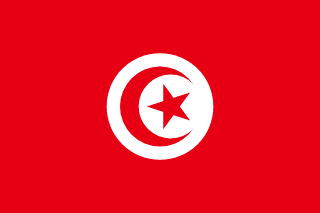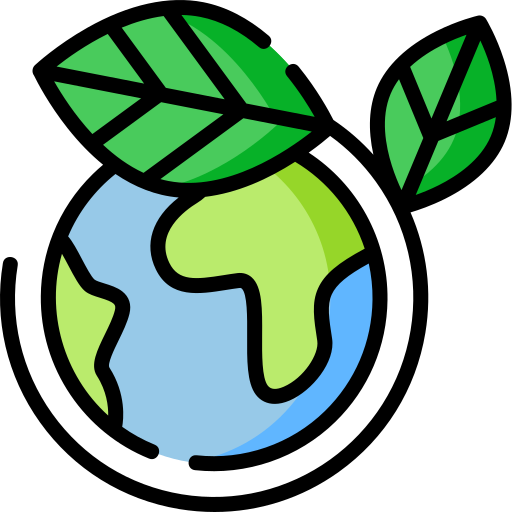Tunisia - Geography

Here, let us take a look at the Geography of Tunisia. Strategic location in central Mediterranean. Mother's mean age at first birth is (), whereas, the Maternal mortality ratio is 36 deaths/100,000 live births (2023 est.)
Geographical data of Tunisia
| Location | Northern Africa, bordering the Mediterranean Sea, between Algeria and Libya |
|---|---|
| Geographic coordinates | 34 00 N, 9 00 E |
| Map references | Africa |
| Tarrain | mountains in north; hot, dry central plain; semiarid south merges into the Sahara |
| Natural Resources | petroleum, phosphates, iron ore, lead, zinc, salt |
| Natural Hazards | flooding; earthquakes; droughts |
| Irrigated Land | 3,920 sq km (2013) |
| Major rivers (by length in km) | |
| Major aquifers | North Western Sahara Aquifer System |
| Land Boundaries | 1,495 km |
| Border Countries | Algeria 1,034 km; Libya 461 km |
| Coastline | 1,148 km |
| Climate | temperate in north with mild, rainy winters and hot, dry summers; desert in south |
| Area | |
| Total Area | |
| Land Area | 155,360 sq km |
| Water Area | 8,250 sq km |
| comparative Area | slightly larger than Georgia |
| Maritime Claims | |
| Territorial sea | 12 nm |
| Contiguous zone | 24 nm |
| Exclusive economic zone | 12 nm |
| Elevations | |
| Highest point | Jebel ech Chambi 1,544 m |
| Lowest point | Shatt al Gharsah -17 m |
| Mean elevation | 246 m |
| Land Use | |
| Agricultural land | 62.4% (2022 est.) |
| Agricultural land: arable land | arable land: 18.2% (2022 est.) |
| Agricultural land: permanent crops | permanent crops: 13.6% (2022 est.) |
| Agricultural land: permanent pasture | permanent pasture: 30.6% (2022 est.) |
| Forest | 4.5% (2022 est.) |
| Other | 33% (2022 est.) |
Population Distribution
The overwhelming majority of the population is located in the northern half of the country; the south remains largely underpopulated, as shown in this population distribution map
People and Society
In Tunisia, the different Ethnic groups are such that we have: Arab 98%, European 1%, Jewish and other 1%
| Population | |
|---|---|
| Pop growth rate | 0.58% (2024 est.) |
| Birth rate | 13.5 births/1,000 population (2024 est.) |
| Death rate | 6.4 deaths/1,000 population (2024 est.) |
| Health expenditure | |
| Physicians Density | |
| Hospital bed Density | 2.4 beds/1,000 population (2021 est.) |
| Total fertility rate | 1.93 children born/woman (2024 est.) |
| Gross reproduction rate | 0.94 (2024 est.) |
| Contraceptive prevalence rate | |
| Est married women (ages 15-49) | 53.9% (2023 est.) |
| Literacy | |
| Education expenditures | |
| Net Migration rate | -1.3 migrant(s)/1,000 population (2024 est.) |
| Nationality | Tunisian | Tunisian(s) |
| Languages | |
| Religions | Muslim (official; Sunni) 99%, other (includes Christian, Jewish, Shia Muslim, and Baha'i) <1% |
| Age Structure | |
| 0-14 years | 24.4% (male 1,516,871/female 1,426,522) |
| 15-64 years | 65.2% (male 3,861,731/female 3,990,802) |
| 65 years and over | 10.4% (2024 est.) (male 593,640/female 659,281) |
| Dependency Ratios | |
| Total dependency ratio | 53.4 (2024 est.) |
| Youth dependency ratio | 37.5 (2024 est.) |
| Elderly dependency ratio | 16 (2024 est.) |
| Potential support ratio | 6.3 (2024 est.) |
| Median Age | |
| Total | 34.4 years (2024 est.) |
| Male | 33.6 years |
| Female | 35.1 years |
| Urbanization | |
| Urban population | 70.5% of total population (2023) |
| Rate of urbanization | 1.34% annual rate of change (2020-25 est.) |
| Major urban areas (Pop) | 2.475 million TUNIS (capital) (2023). |
| Sex Ratio | |
| At birth | 1.06 male(s)/female |
| 0-14 years | 1.06 male(s)/female |
| 15-64 years | 0.97 male(s)/female |
| 65 years and over | 0.9 male(s)/female |
| Total population | 0.98 male(s)/female (2024 est.) |
| Infant Motality | |
| Total | 11.3 deaths/1,000 live births (2024 est.) |
| Male | 12.7 deaths/1,000 live births |
| Female | 9.8 deaths/1,000 live births |
| Life Expectancy at birth | |
| Total population | 77.3 years (2024 est.) |
| Male | 75.7 years |
| Female | 79.1 years |
| Drinking Water Sources | |
| Improved: urban | urban: 98.8% of population (2022 est.) |
| Improved: rural | rural: 93.4% of population (2022 est.) |
| Improved: total | total: 97.2% of population (2022 est.) |
| Unimproved: urban | urban: 1.2% of population (2022 est.) |
| Unimproved: rural | rural: 6.6% of population (2022 est.) |
| Unimproved: total | total: 2.8% of population (2022 est.) |
| Sanitation facility acess | |
| Improved: urban | urban: 98.8% of population (2022 est.) |
| Improved: rural | rural: 99.4% of population (2022 est.) |
| Improved: total | total: 99% of population (2022 est.) |
| Unimproved: urban | urban: 1.2% of population (2022 est.) |
| Unimproved: rural | rural: 0.6% of population (2022 est.) |
| Unimproved: total | total: 1% of population (2022 est.) |
| Alcohol consumption per capita | |
| Total | 1.51 liters of pure alcohol (2019 est.) |
| Beer | 0.99 liters of pure alcohol (2019 est.) |
| Wine | 0.32 liters of pure alcohol (2019 est.) |
| Spirits | 0.17 liters of pure alcohol (2019 est.) |
| Other alcohols | 0.03 liters of pure alcohol (2019 est.) |
| Tobacco use | |
| Total | 19% (2025 est.) |
| Male | 37.6% (2025 est.) |
| Female | 1.4% (2025 est.) |
| Child marriage | |
| Women married by age 15 | 0% (2018) |
| Women married by age 18 | 1.5% (2018) |
| Men married by age 18 | 0% (2018) |
Demographic profile
All Important Facts about Tunisia
Want to know more about Tunisia? Check all different factbooks for Tunisia below.









